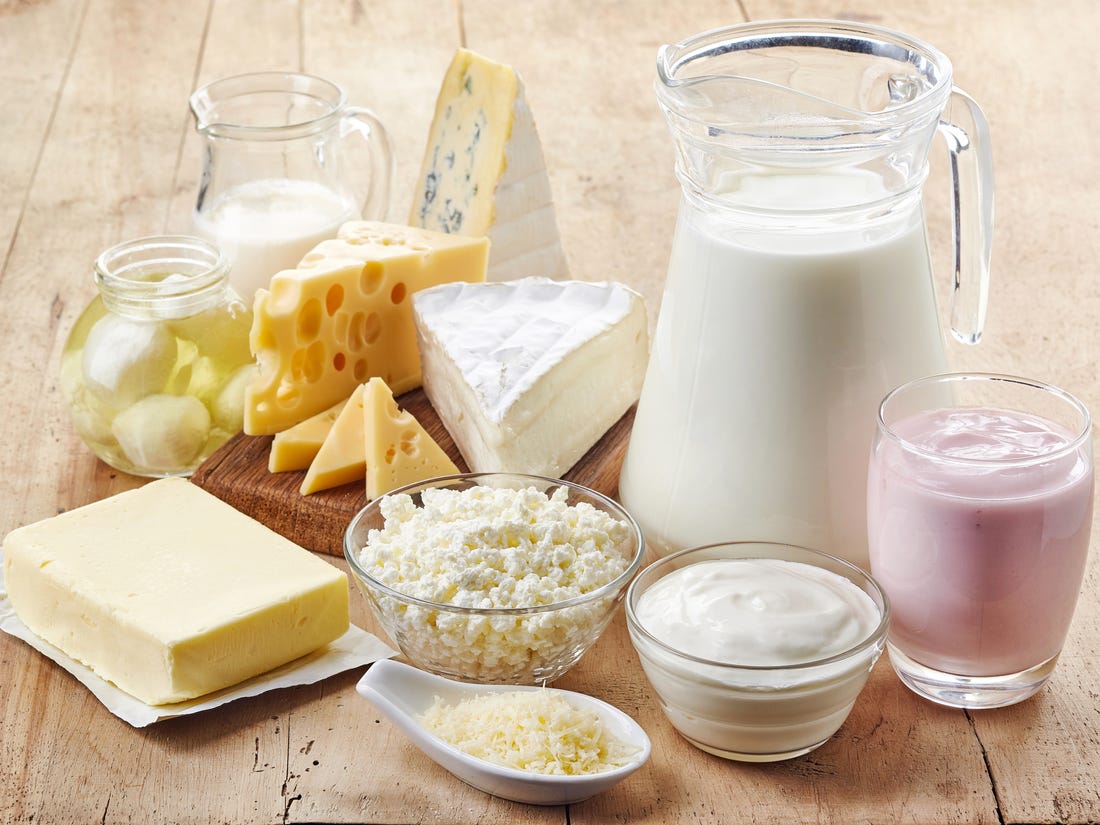Lactose intolerance is a very common digestive condition that affects about 75 percent of the world’s population. It is a condition in which a person is unable to fully digest the lactose (sugar) in milk. If you have lactose intolerance, you may experience digestive problems when you consume dairy. This condition is not harmful, but it can be uncomfortable and have a negative effect on your quality of life. Being lactose intolerant shouldn’t be confused with being allergic to milk since both conditions are different. With lactose intolerance, the body reacts to milk sugar, while with a milk allergy; the body reacts to milk proteins.
What is lactose intolerance?
Lactose is the sugar found in milk. It is a disaccharide, which means it consists of two sugars. Lactose is made up of one molecule each of the simple sugars glucose and galactose. The human body uses an enzyme called lactase to break lactose down into galactose and glucose, so the body can absorb it into the bloodstream and use it for energy. However, people with lactose intolerance don’t make enough enzyme lactase. With only low levels of lactase, lactose moves through the gut undigested, then goes on to the colon where it mixes with normal ferments and bacteria and causes digestive problems.

If you have lactose intolerance, you will experience symptoms around 30 minutes to 2 hours after consuming foods that contain lactose. The symptoms can vary from mild discomfort to severe reaction, usually depends on how much lactase your body produces and how many dairy products you consume. The symptoms include:
- Abdominal pain or cramps
- Diarrhea
- Nausea (sometimes with vomiting)
- Bloating
- Flatulence or gas
You may also experience an urgency to go to the toilet and constipation. Diarrhea happens because of the undigested lactose in your small intestine causes water to move into your digestive tract. When the lactose reaches your colon, it gets fermented by the natural bacteria in your gut and forms gas as well as short-chain fatty acids. When this happens, you may experience bloating, pain, and flatulence.
What are the types?
There are three types of lactose intolerance.
- Primary lactose intolerance is the most common type of lactose intolerance. This type is caused by a decrease in lactase production caused by age, meaning lactose is poorly absorbed. People start their life with plenty of lactase, which is necessary for infants since they get all their nutrition from milk. As children grow older, they replace milk with other foods, resulting in reduced lactase production, but still enough to digest the amount of dairy in a typical diet. However, in people with primary lactose intolerance, their lactase production decreased significantly, which makes milk products difficult to digest by the time they reach adulthood. This type of lactose intolerance is thought to be partially caused by family genes.
- Secondary lactose intolerance occurs when your small intestine reduces lactase production after an illness, surgery, or injury in your small intestine. The most common causes are Crohn’s disease, celiac disease, gastroenteritis, ulcerative colitis, intestinal surgery, and chemotherapy.
- Congenital or developmental lactose intolerance is very rare. Babies that are born with lactose intolerance because there’s a complete absence of lactase activity in their bodies. It occurs when both the father and the mother pass on the same gene variant. Premature infants can also have lactose intolerance because they have an insufficient level of lactase.
What are the risk factors?
Some factors make a person more likely to have lactose intolerance, including:
- Growing older. Lactose intolerance often appears in adulthood and uncommon in babies or young children.
- Premature birth. Premature infants can have decreased levels of lactase since the small intestine develops lactase-producing cells late in the third trimester.
- Ethnicity. People of African, Asian, American Indian, and Hispanic descent are more prone to lactose intolerance.
- Some cancer treatments. Radiotherapy for cancer in the abdomen or intestinal complications from chemotherapy can increase your risk of lactose intolerance.
- Diseases that affect the small intestine. Bacterial overgrowth, Crohn’s disease, and celiac disease are some small intestine problems that can cause lactose intolerance.

How do I know if I have lactose intolerance?
People who experience symptoms of lactose intolerance are recommended to keep a food diary, to list food they have consumed, symptoms, and when they appear. Your doctor will likely ask you to try a lactose-free diet for around 2 weeks. If the symptoms improve, you are probably lactose intolerant. Your doctor may also perform some tests to detect an intolerance, the tests include:
- Breath test
- Blood test
- Stool sample
- Underlying condition
What is the treatment for lactose intolerance?
There is no cure for lactose intolerance. The best treatment is to avoid foods that contain lactose. Some people may be able to eat small servings of dairy, such as tea with milk. Cutting out dairy from your diet can mean you miss out on important nutrients and can lead to malnutrition, such as calcium, vitamin A, Vitamin B12, vitamin D, and protein. Therefore, it is important for you to consume food with similar natural content. If you don’t want to give up dairy, there are a few natural treatments that may help you. You can buy enzymes to help digest lactose, but the effectiveness may vary from one person to another.
Which foods contain lactose?
Lactose can be found in products that contain dairy. Dairy foods that contain lactose are cow’s milk, goat’s milk, ice cream, yogurt, cheese, and butter. Foods that use dairy as an ingredient can also contain lactose; these include biscuits, cookies, chocolate, candies, bread, baked goods, cakes, and instant soups, and breakfast cereals, foods made with a milky sauce, potato chips, desserts, and processed meats. To know whether a product contains dairy or not, you can look at the label. On the ingredients list, added milk or dairy products usually described as milk, milk powder, milk solids, milk casein, milk sugar, milk by-products, whey, whey protein, and whey protein concentrate curds, buttermilk, dry milk solids, melted milk, cheese, and sour cream. There are also certain prescription medications (such as birth control pills) and a small number of over-the-counter drugs (such as medication for stomach acid) that contain lactose.
